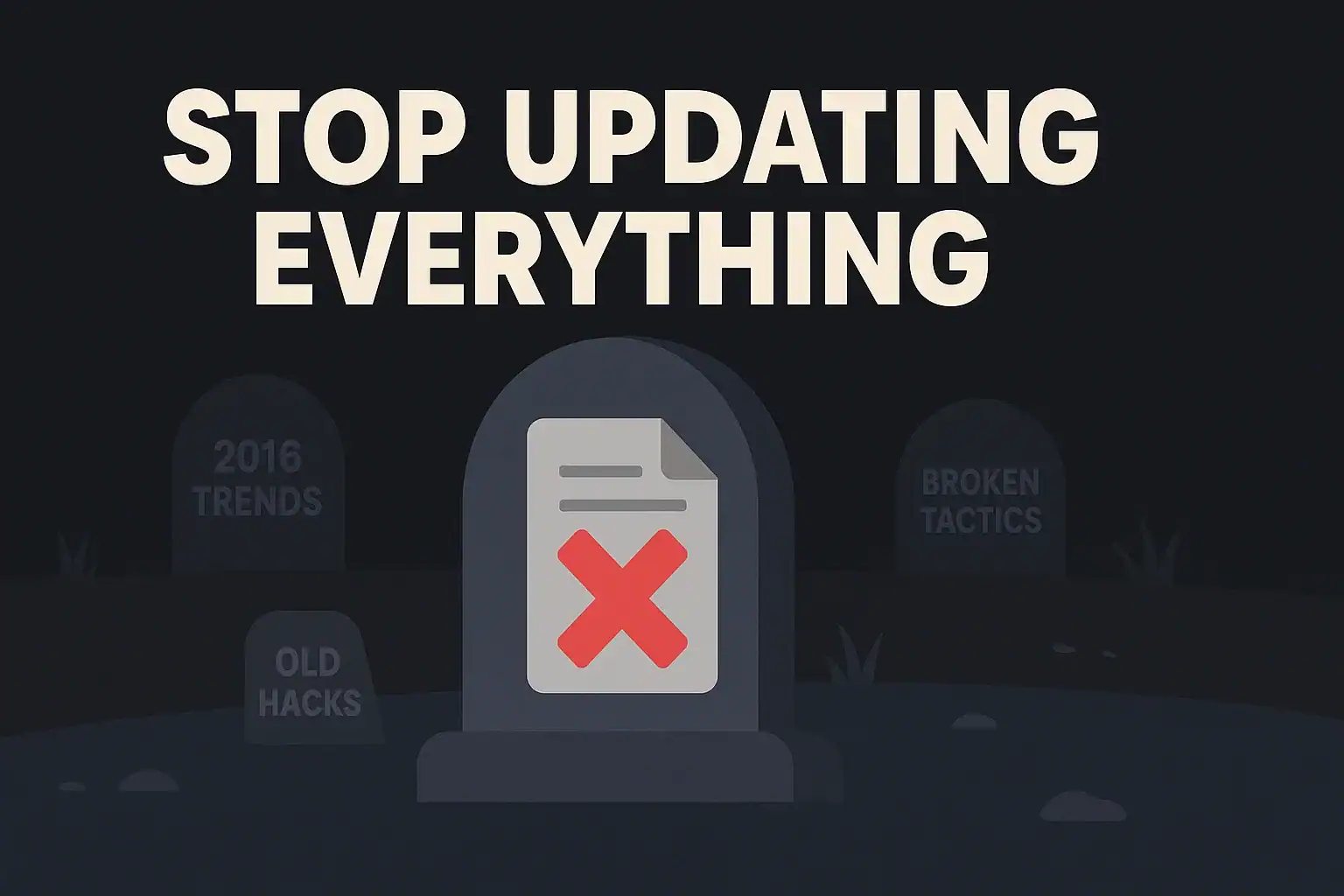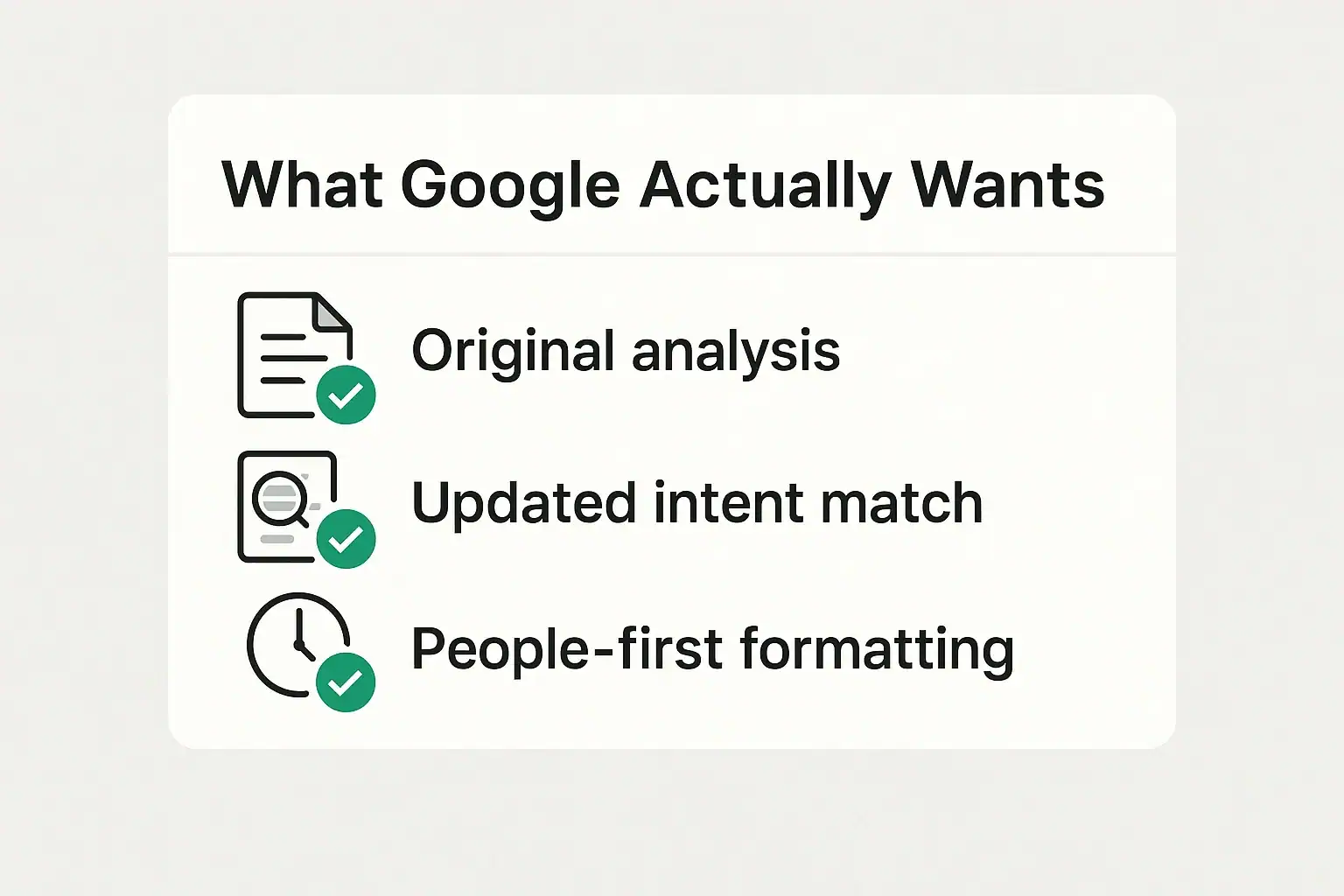(And What to Do Instead)

Table of Contents
If you’ve been in SEO long enough, you’ve probably heard this advice on repeat:
“Keep your content fresh.” “Update your old blog posts regularly.” “Google rewards freshness.”
And while there’s some truth in that, there’s also a trap.
Here’s the contrarian take: not every piece of content is worth updating. In fact, sometimes the smartest SEO move is to let it die—strategically.
In this post, we’ll explain:
- Why some content updates are a waste of time (and budget)
- How to know when it’s time to update, redirect, consolidate—or delete
- What Google and Bing really want when it comes to fresh content
- How to audit your content archive for maximum ROI
1. Some Topics Are Just… Dead

Let’s say you wrote a high-performing blog post back in 2016 on “Snapchat for Business.” But now your traffic’s gone. Engagement’s gone. And Snapchat… well, it’s not exactly at the centre of B2B marketing anymore.
No one’s searching. No one’s clicking. No one cares.
You could add new stats. Tweak the H1. Swap out the images. But here’s the uncomfortable truth: you’re just polishing a corpse.
👉 If search interest has tanked or the platform/tool has become obsolete, that blog post is no longer a business asset—it’s clutter.
2. Search Intent Has Shifted

Even when a topic stays relevant, the search intent can change drastically.
Example: A few years ago, people Googling “AI writing tools” wanted a list of tools. Now? They want comparisons. Pricing breakdowns. Reviews. Hands-on insights.
If your original blog post doesn’t match that evolved intent, no amount of cosmetic updates will help.
📉 It won’t rank. 😒 It won’t satisfy the reader. ❌ It won’t convert.
In this case, a total rewrite—or building a new, purpose-built page—is often more effective.
3. You’ve Been Outpaced by Competitors

Let’s be blunt: the SEO bar has been raised.
If your competitors have created better, richer, more engaging content—with custom graphics, first-party data, and interactive elements—your “updated” 800-word post isn’t going to win.
Even if you sprinkle in some new keywords and a shiny publish date.
Sometimes, you’re not falling behind because your content is old. You’re falling behind because it’s outclassed.
So… What Should You Do Instead?

Here’s how smart SEOs at Digital Business approach ageing content:
✅ 1. Redirect
If the content is no longer valuable but still attracts backlinks or traffic, 301 redirect it to a related, better-performing page.
This preserves SEO equity without keeping poor content live.
✅ 2. Consolidate
Got multiple underperforming blogs on similar topics? Merge them into a single, strong page.
Pick the most relevant URL, update the content to reflect new search intent, and redirect the rest.
✅ 3. Delete
If a page has:
- No backlinks
- No rankings
- No relevance
Then it’s a digital liability, not an asset. Clean it out. Google rewards clarity and value—not content volume.
What the Algorithms Actually Reward

Google’s Helpful Content Guidelines and Bing’s Webmaster Guidelines make one thing clear:
“Freshness” isn’t about changing dates or rewriting intros.
It’s about delivering reliable, original, and people-first information that aligns with what searchers want right now.
If you’re updating content, do it to genuinely improve the experience—not to “game” freshness signals.
Final Word: Don’t Let Nostalgia Guide Your SEO
Great content isn’t immortal. And being too emotionally attached to your blog archive can become a bottleneck to progress.
A high-impact content strategy isn’t just about publishing. It’s about pruning.
Audit ruthlessly. Act strategically. And remember: sometimes, letting go is the most powerful SEO move you can make.
